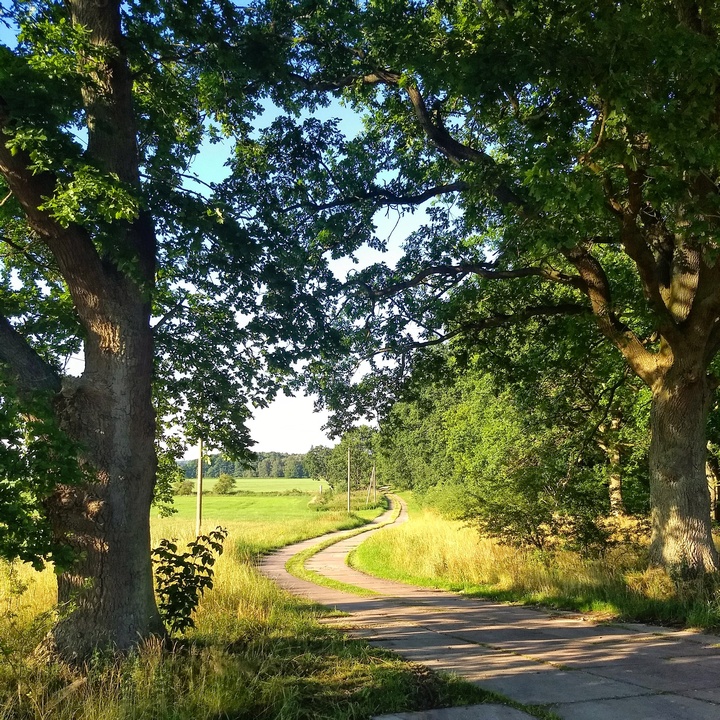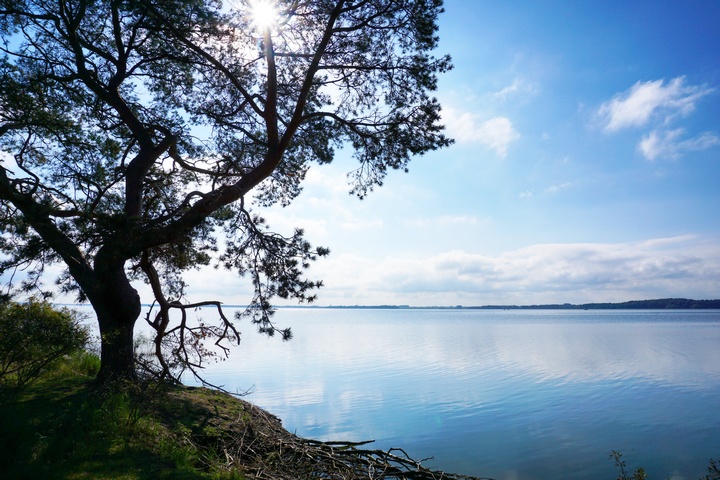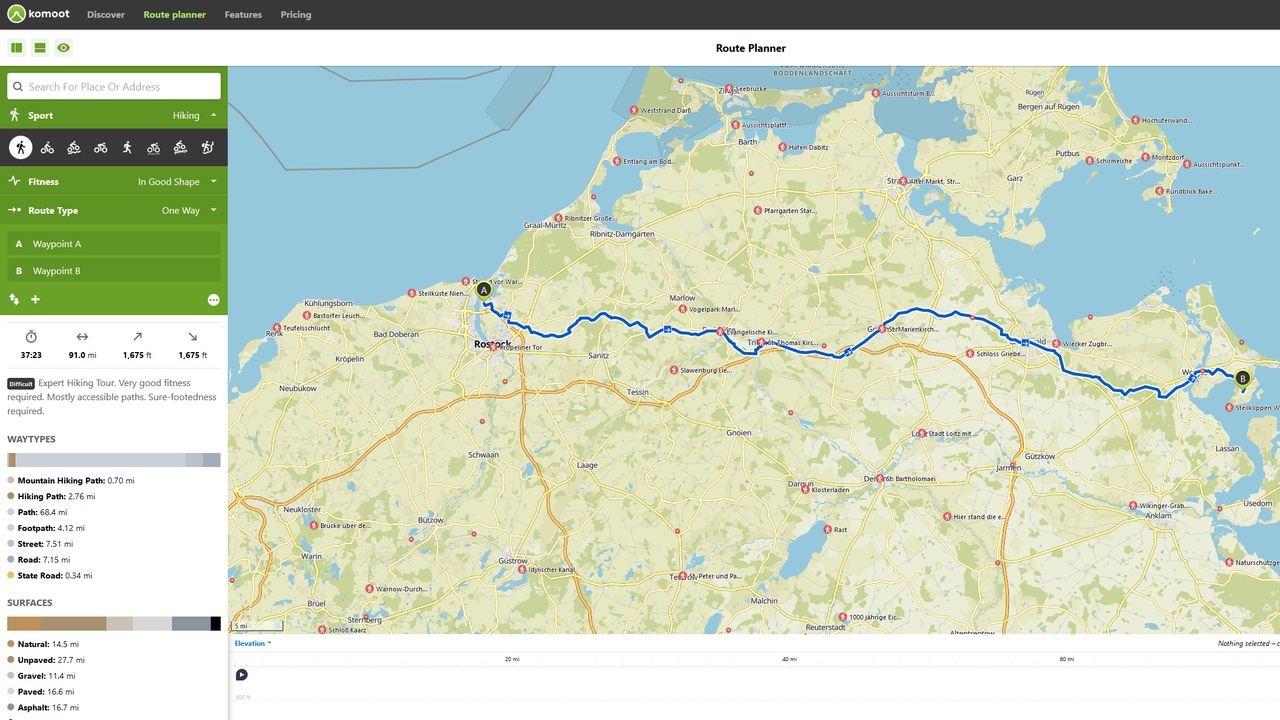In my last post I covered my personal ten things I’d carry with me on longer journeys on foot. This one is about how to set out and plan your next adventurous trip!
I’d say that every trip longer than a day consists of three parts: First, the route planning; second, gathering the required equipment for the planned route; and third, setting out and adjust our travel activities as required.
Part One

With the internet it has actually never been easier to plan a route and great explorers from centuries ago would have envied us for our options. There are several internet sites offering great features for planning your route. Outdooractive, for example, shows the amount and share of nature trails, dirt roads, asphalt and such of your whole route which might be important for your footwear and what sites you want to see along your journey. It allows to export your planned route in a file format readable by GPS devices, let you share your routes publicly and access shared routes by others. Komoot and Kompass offer basically the same features with a slightly different interface. Another thing they all have in common that only the most basic features are free of charge while more advanced features require a subscription. Personally, I recommend Komoot if you want to use any of the available websites because they also consider hiking highlights when drawing a route between your way-points. You can also include locations from several categories like shops or camping grounds in your way-points, and the Android app is also a bit better than the one from Outdooractive.
A great advantage of these kind of services is their beginner friendliness. You can download offline maps and voice navigation and with one or two fully charged power banks you can travel for many days and cover a lot of ground.
However, if this isn’t adventurous enough for your liking you can also plan your route manually. Still via internet and Google maps (you can use the distance measure tool) or old-school via physical (that means “offline”) hiking maps you may have to buy. I wouldn’t recommend this for your first big trip but you should definitely try it out because finding paths and divert from planned routes and getting back on them and seeking a complete different destination can be a big part of the adventure.
If you’re going to travel in Germany there is not much to consider aside from highly frequented roads for cars you probably want to avoid. With almost no feral animals dangerous to people and with a population density as high as in Germany, where the next village, town or city is often not farther than a few kilometres, cases of emergency aren’t as dangerous as in other countries like Russia or parts of the Scandinavian countries.
All of these tools, however, don’t plan your stops, rests and your overnight staying. Don’t overreach and think you can walk for eight hours straight with full field pack. Always calculate shorter with safe margins that leave room for additional exploration, errors, photos, leisure time, building time for you camp and/or for gathering supplies if needed. If there are no official camping spots along your route you have to mark possible spots where you can camp on your map and you should be able to reach them in time. Be prepared to improvise if things don’t go according to plan and try to keep up your and your company’s spirit.
Part Two
This one is going to be very short. The basic equipment you should bring along is already covered in my previous posts. Depending on the distance, season, and weather, you do want to adjust your equipment and also want to bring special equipment. Always remember: the right tool for the right job. And always have a backup plan in case things go south!
Part Three

It’s finally time. You have everything ready you could think of. You are prepared and now it’s time to pack up your things and march out! In case your smartphone’s battery dies you should definitely have a old fashioned map and a compass at your disposal. Navigating with these can be a bit tricky depending on the terrain and if you can keep a line of sight of your way-point or not. So it’s better to try and use it sometimes even if you have your GPS and smartphone available.
Always remember that you’re journey is often not a physical but mental one. If you go out all alone it can be quite unnatural to spend so much time just by yourself and doing one thing only for the most part: walking. It’s obviously not as bad as being remote from any kind of civilization for weeks or months. You probably not going to be a hermit. Depending on your background and usual activities it might still be mental challenge as well. So you should be sure to take joy from any little thing that nature offers you along your way. You can also get creative and try to photograph or even try to sketch and draw places you’ve visited. You can write about them. I’m not all analog and I would never condemn modern media, so bring along your favourite music you might want to listen to at special locations or when you feel like in need of a change to the sounds of nature.

